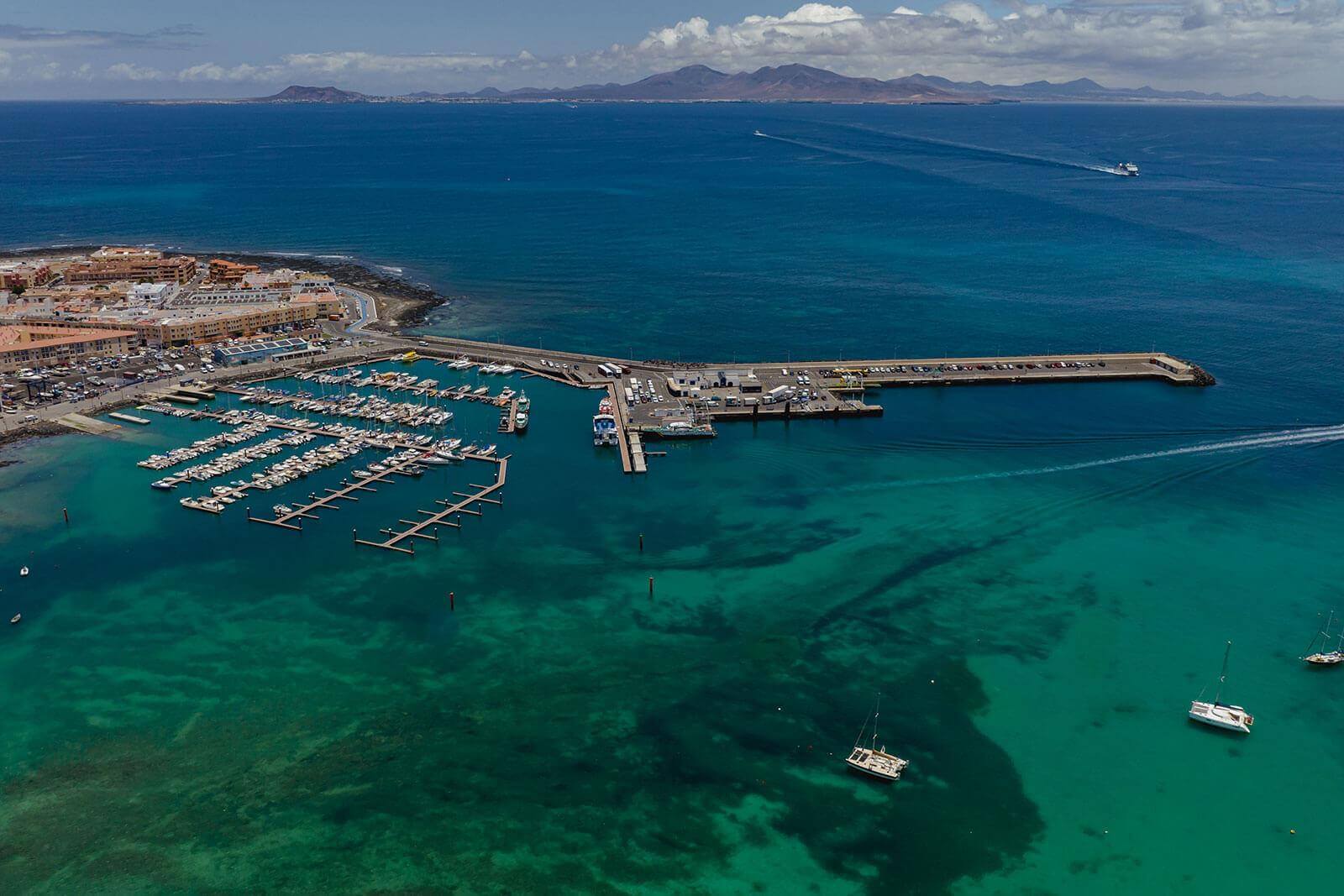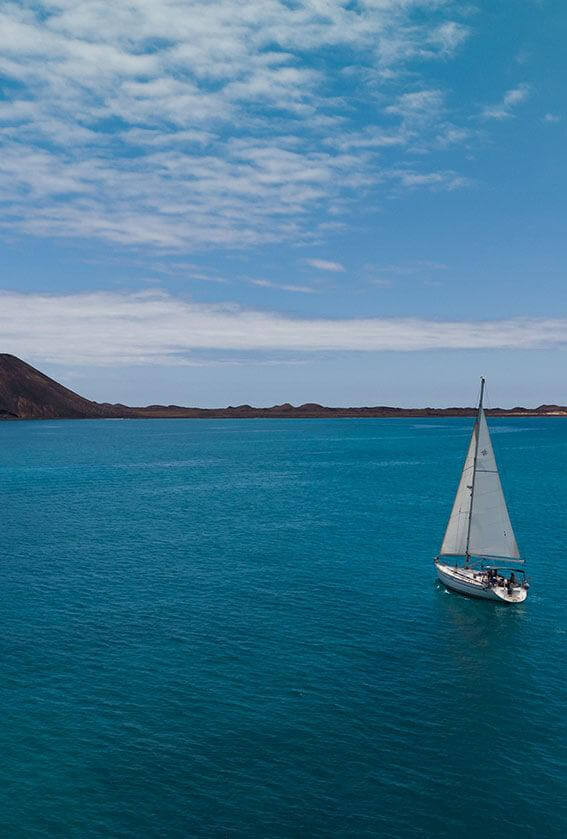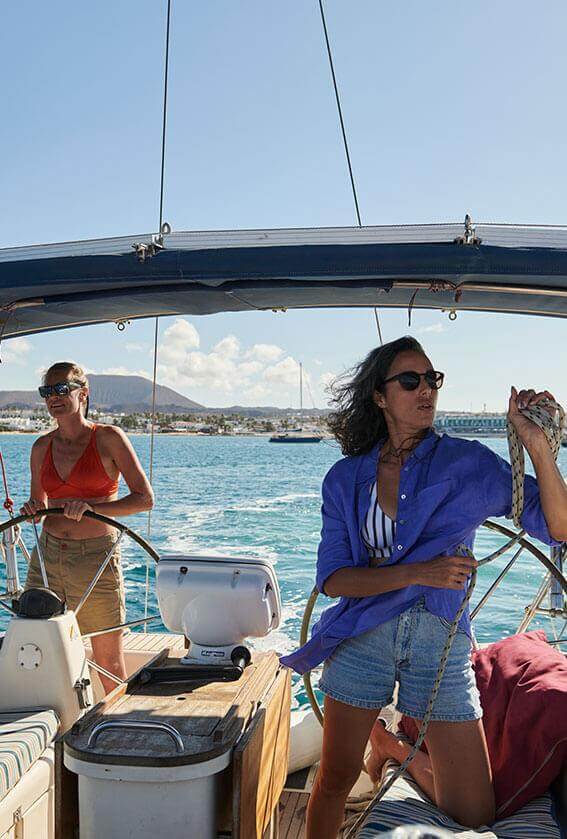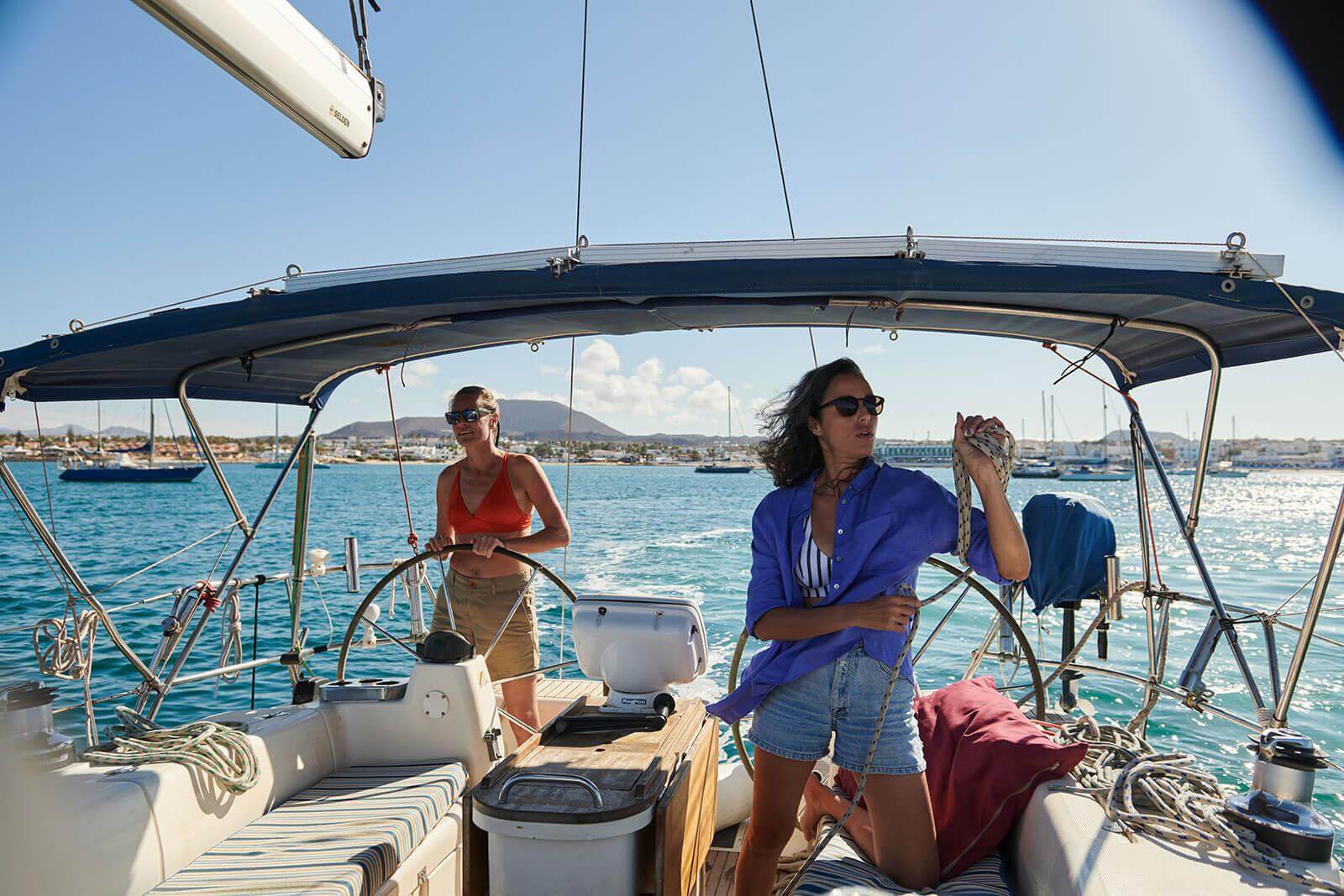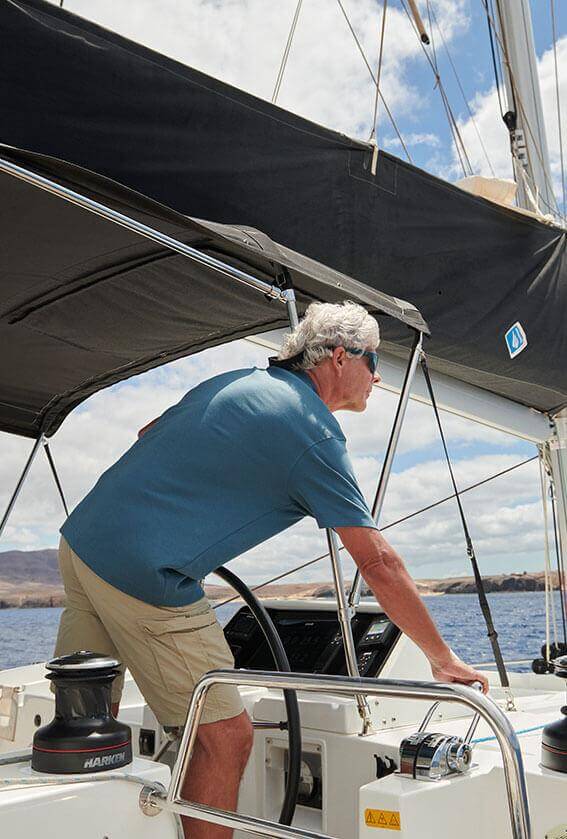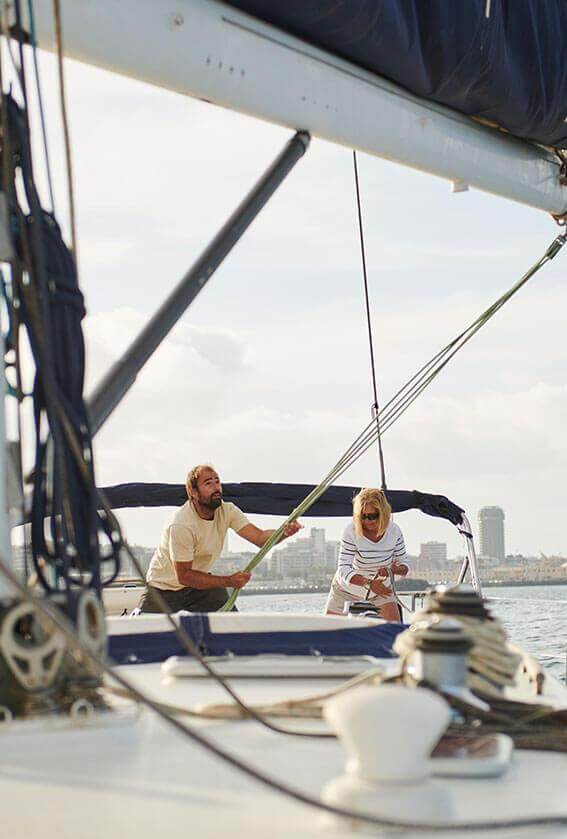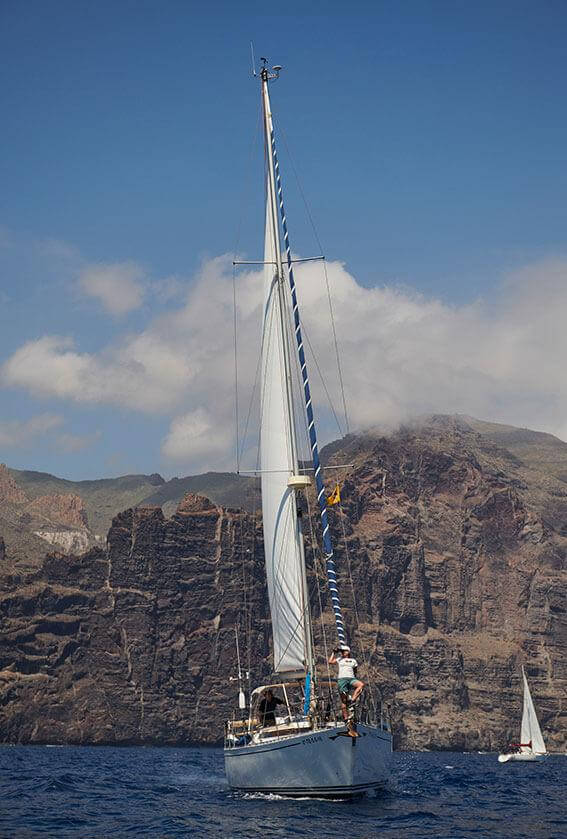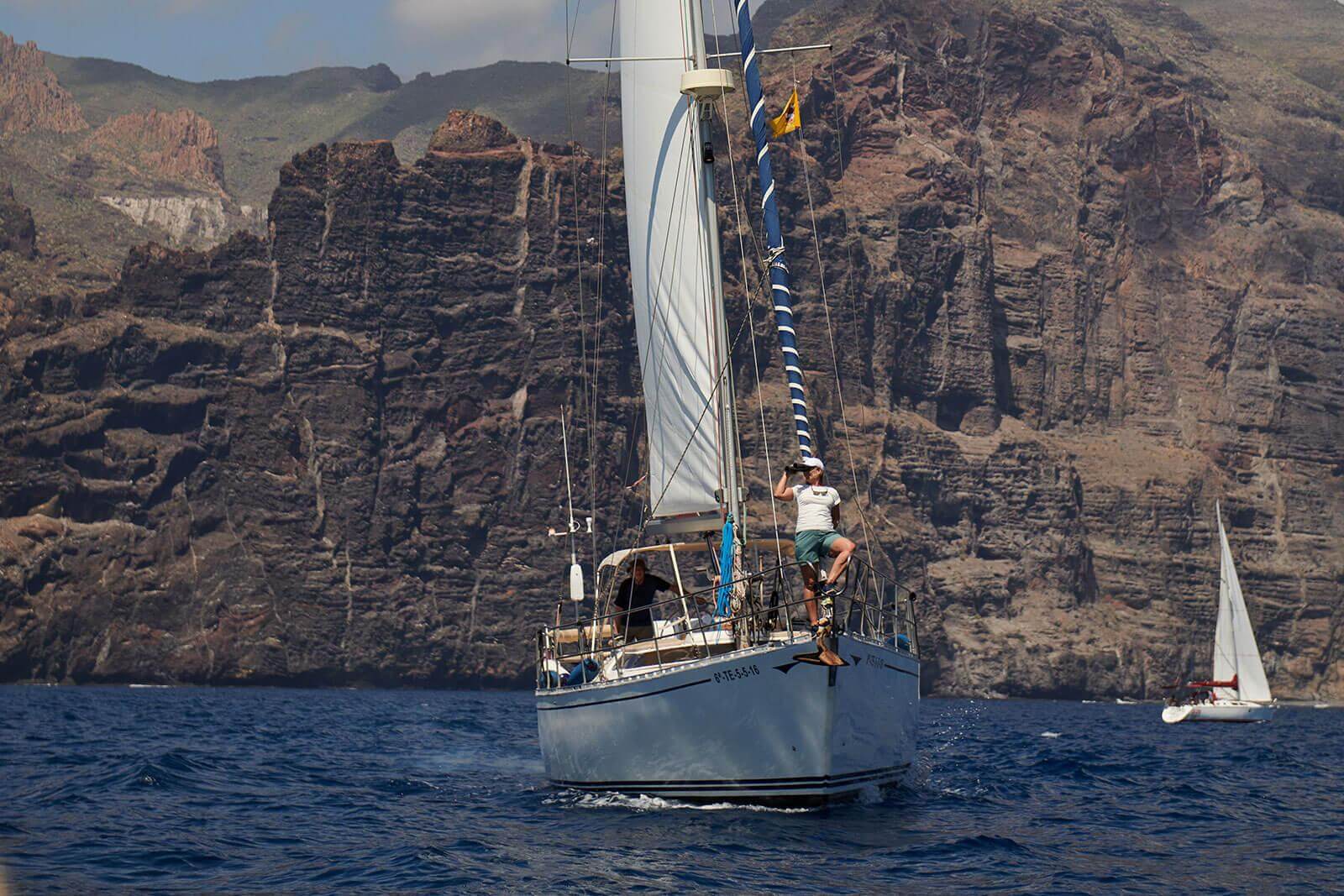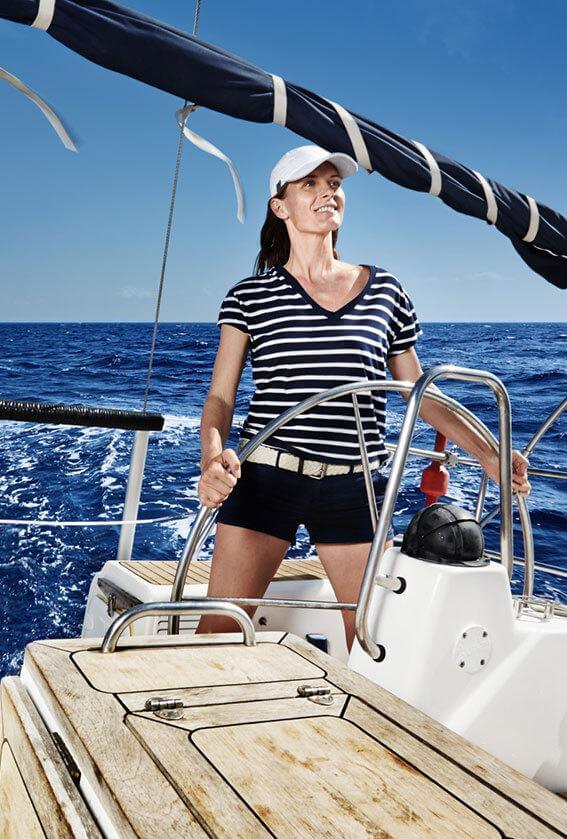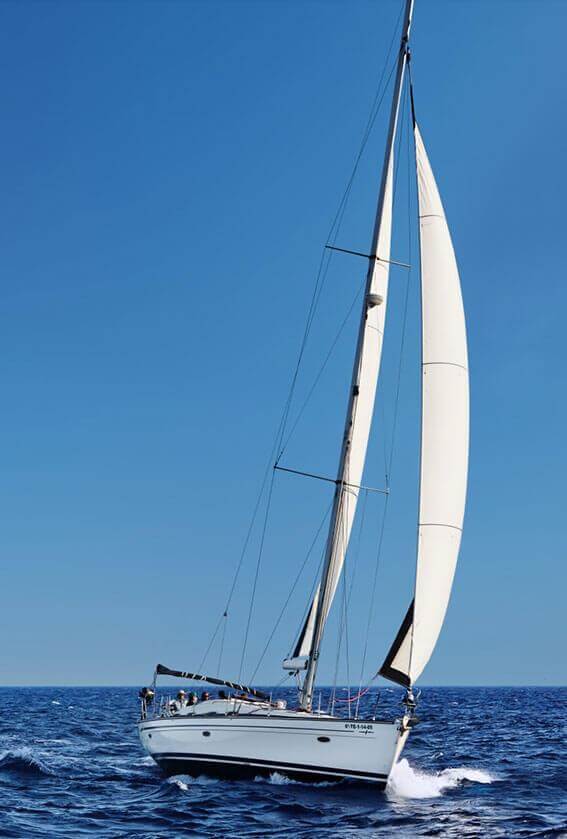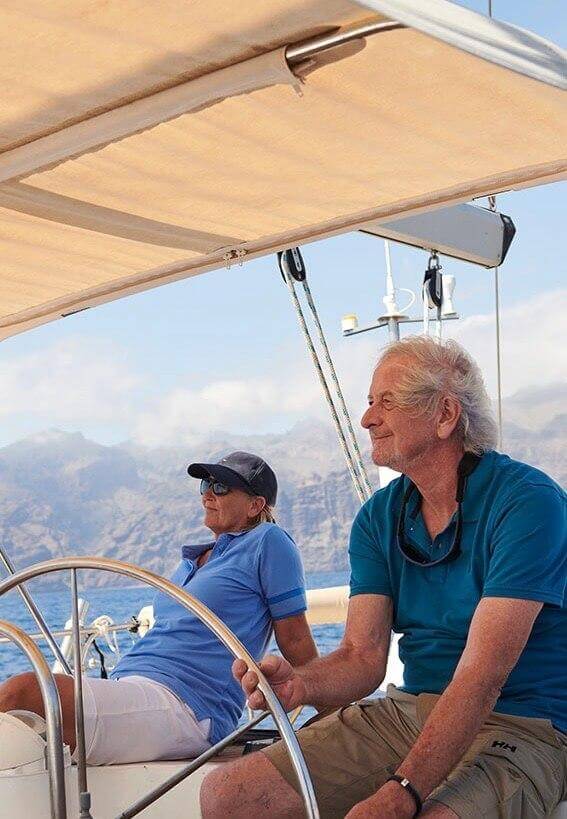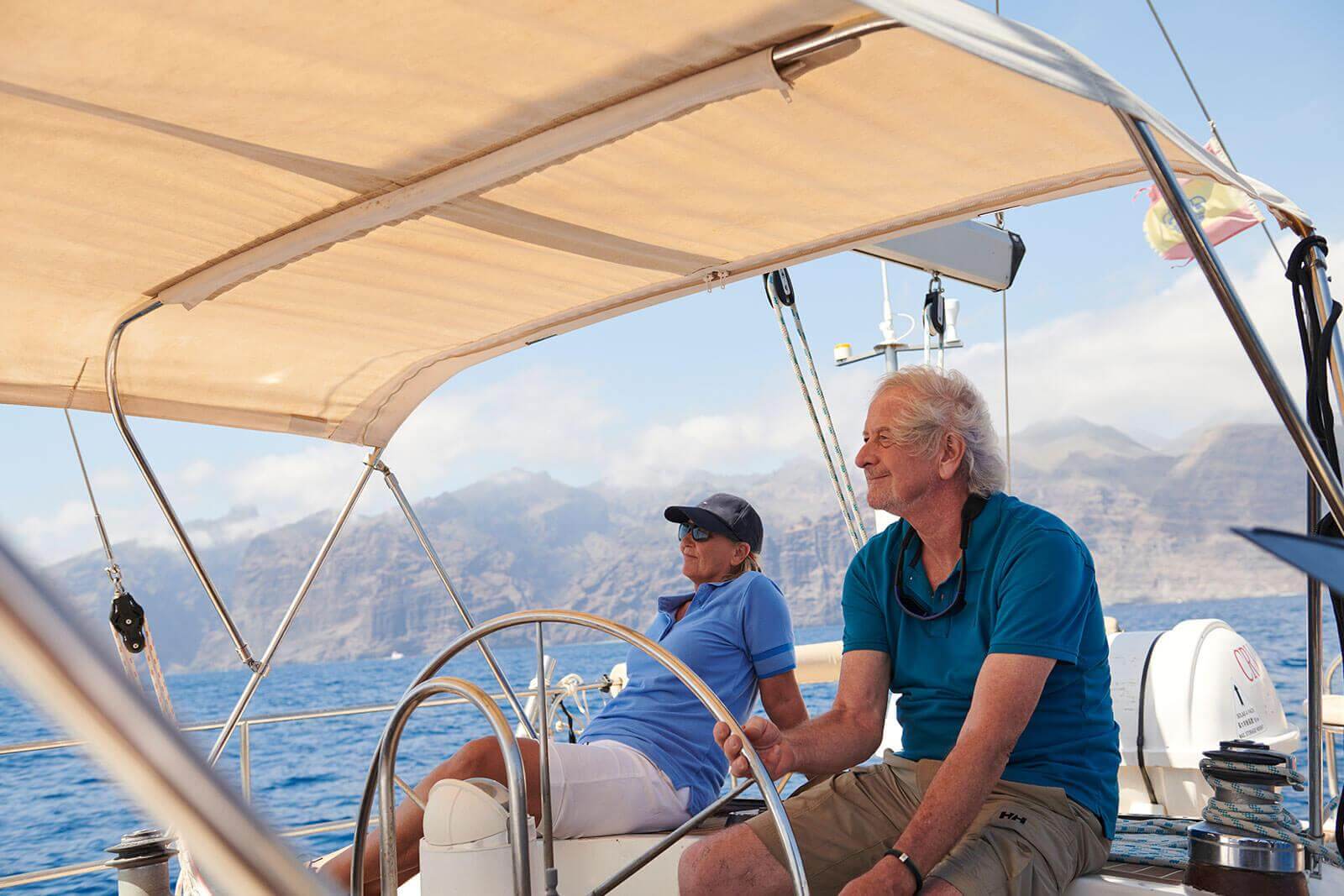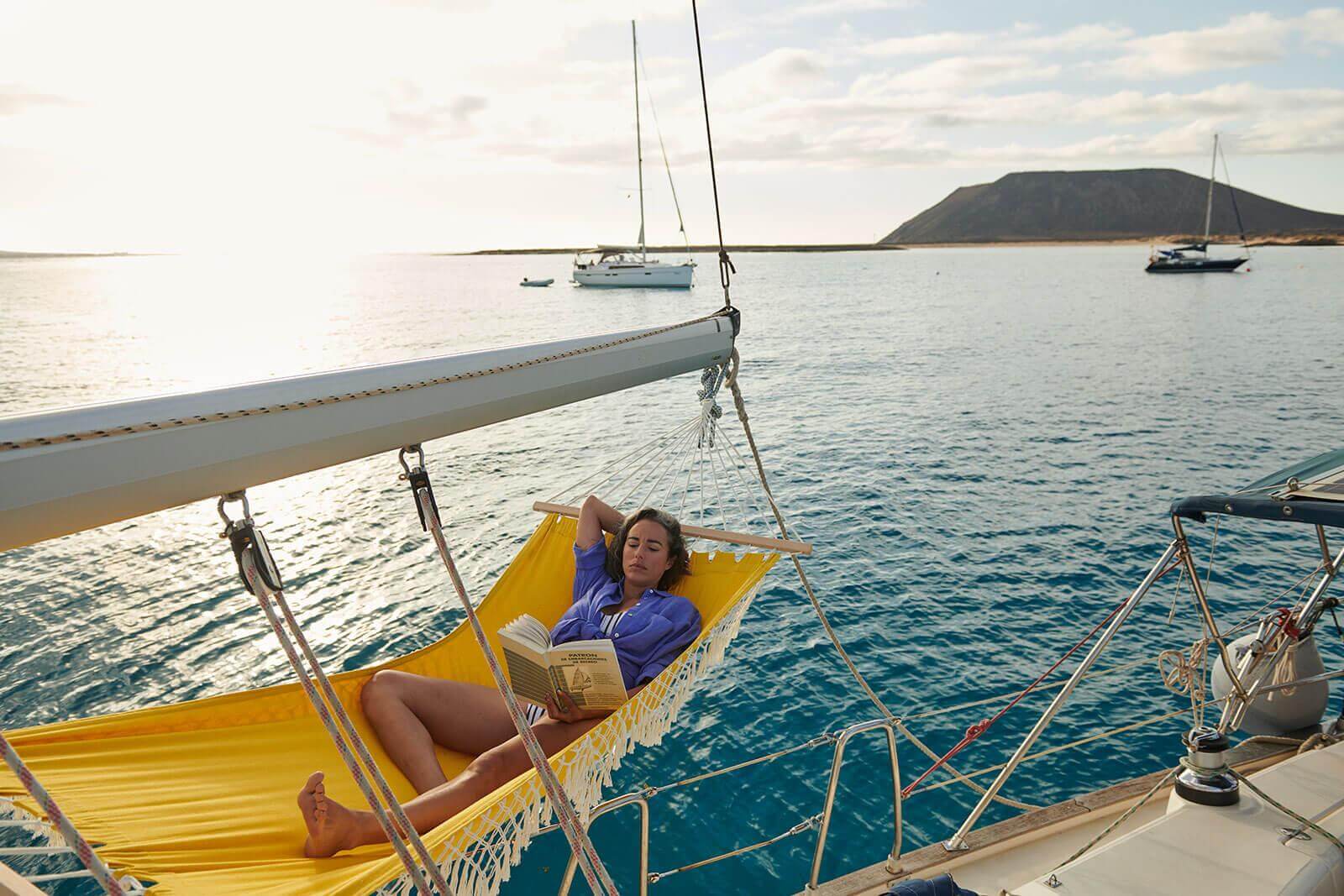Eight different islands, numerous marinas distributed all around the archipelago and an ideal climate for sailing all year round. The Canary Islands are one of the best places there are for enjoying sailing. And also for following sailing routes and living out an unforgettable experience, similar to ocean sailing. Perfect for enthusiasts of this sport.
Voyages to suit all tastes
The Canary Islands have more than 30 ports and marinas dotted around all the islands. This means planning a route to follow in your sailing boat is fairly easy, because the distances between the harbours can be covered in less than a day’s sailing. As a result, the archipelago offers a host of possibilities for enjoying fantastic scenery and wonderful sea floors which are remarkably rich in biodiversity.
When choosing a route to sail on, the options are endless. From planning a trip to circle round one of the eight islands, to visiting two or more different islands over several days of sailing, or devising a more ambitious project, such as linking up the entire archipelago under sail. It will all depend on the time available, the weather conditions and the capabilities of the crew. Because voyages in the Canary Islands call for a certain degree of experience in sailing on the high seas.
Adapting sailing to the conditions according to the time of year
The weather here is dominated by the Azores High and the influence of the trade winds. The predominant winds therefore usually blow in a north and north-easterly direction. Anything involving sailing to the north or north-east implies close-hauled sailing or sailing against the wind, which is always more awkward than sailing on a reach.
When planning a sailing trip, regardless of the number of days or islands to be visited, we should definitely take into account the time of year at which it will take place. Even though sailing is possible all year round, given the good climate that prevails in all seasons, winter in particular is highly recommended for such trips.
The best period is from November to February. At this time of year the trade winds are calmer and the conditions are more placid. June, July and August are the most intense months, when the trade winds blow harder, and September and October can be a calm period with extremely gentle winds.
During the other months of the year, the influence of the trade winds can be felt to a greater or lesser degree, but with variations in intensity and direction. At times, there can be weeks of southerly or westerly wind. And so regardless of the time of year one chooses for embarking on a sailing route, it is advisable to study the wind and wave predictions thoroughly using specialist applications.
Wind acceleration zones
Another consequence of the influence of the trade winds in the Canary Islands is the acceleration of the wind in some coastal areas. The archipelago is comprised of eight islands, as well as a number of islets, and for most of the year the trade winds reach all of them from the north or north-east.
On entering into contact with an island, these winds may accelerate on certain stretches, at times exceeding 25 knots (46 kilometres an hour). These gusts of wind can make sailing complicated if one is not familiar with the area, or the boat is not adapted in terms of trim, adjusting the sails and preparing the crew. The zones in question are normally located in the east and south-east of several of the islands, as is the case in Arrecife (Lanzarote), south of Puerto del Rosario and the Jandía peninsula (Fuerteventura) or the south-east of Gran Canaria and Tenerife.
Sailing routes around the eastern islands
Travelling around Gran Canaria, Lanzarote and Fuerteventura is a perfect idea for a sailing programme lasting 10 to 15 days. Setting aside 7 days for sailing, the remaining time can be devoted to resting in the marinas and discovering the wonderful scenery of each island, as well as their seabeds and range of gastronomy and leisure options. A unique experience that enables visitors to discover the islands from the sea.
From Gran Canaria to Fuerteventura
It is fairly easy to reach Fuerteventura from Gran Canaria, provided the wind is not set from the east. The route to Morro Jable, in the south of the island, can be covered in a day’s sailing. If the wind blows from the north or north-east, we should sail on a broad reach. And so it can take around 8 hours to cover the 57 nautical miles (105 kilometres) separating the two ports.
From Morro Jable, ideally we will travel up the island of Fuerteventura along the leeward (east) coast, and have the possibility of putting in at Gran Tarajal, Caleta de Fuste or Puerto del Rosario, before arriving in Corralejo (in the north). These ports are relatively close to each other, so a stopover will depend on how far up the island we want to go, in order to come as close as possible to Lanzarote. Another option for enthusiasts of sea crossings would be to go directly from Morro Jable to Corralejo, a route of around 60 nautical miles which can be completed easily in one day.
From Fuerteventura to Lanzarote
On leaving Corralejo, the best idea is to go around the island of Lanzarote along the leeward coast. And then, once again, we have two options. Going directly to the island of La Graciosa, covering the 50 miles (92 kilometres) that separate the two points, or stopping at one of the numerous marinas dotted along this coast: Puerto Calero, Puerto del Carmen or Marina de Arrecife. We will leave Marina Rubicón, in the south of the island, for the moment, and call in there on our return trip to Gran Canaria.
La Graciosa, the smallest of the Canary Islands, is located north of Lanzarote and is noted for having Europe’s largest marine reserve. We recommend you take your time to visit it and relax on its beaches with transparent waters.
Playa Francesa offers good shelter and is the best place for anchoring. The seabed is sandy, with no rocks, and about 8 metres deep at high tide and 4 metres at low tide. To anchor here, you will need a permit which can be obtained from the environmental service of the Cabildo de Lanzarote.
Back to Gran Canaria
After leaving La Graciosa, and resting and enjoying the tranquillity there, for the trip back to Gran Canaria we sail down the west or windward coast of the islands of Lanzarote and Fuerteventura. The first stage would take us to Marina Rubicón, in the south of Lanzarote. A simple sail, of 36 miles (67 kilometres) and with the wind in our favour, which can be completed in about 5 hours.
To finish this sailing trip around the eastern islands and put in at Gran Canaria again, we can sail directly from Marina Rubicón to Marina Las Palmas. Although this is the longest voyage of all those proposed - 95 miles (175 kilometre) - it is quite feasible to cover it in a single day, provided we cast off very early, as it will require at least 12 hours’ sailing.
Another option would be to make another stop at Morro Jable, in the south of Fuerteventura, spend the night and sail the last leg to Gran Canaria from here, after sailing approximately 8 hours. We must bear in mind that the return trip from Lanzarote and Fuerteventura to Gran Canaria usually takes place with the wind in our favour, downwind.
Sailing routes around the western islands
Another incredible sailing route in the Canary Islands would be to travel around the western islands. This adventure could start at any marina in Tenerife, with stopovers in La Palma, La Gomera and El Hierro. Travelling around these islands combines discovering the immensity and beauty of their cliffs with the adrenaline of contending with a demanding sail. Choosing the time of year well, and consulting the weather forecasts for the wind and waves is an essential part of making this an unforgettable experience.
If we set sail from Santa Cruz de Tenerife, for example, there are two possible ways of following this western island route. The first would be starting off with a longer crossing to La Palma, and then going to La Gomera and El Hierro. We would then return to Tenerife on the south side. And the other alternative would be to go down to the south of Tenerife, visit El Hierro and then La Gomera, and finish up in La Palma. This would mean we return to the north of Tenerife. The choice of route will depend to a large extent on the wind direction and wave conditions.
From Tenerife to La Palma
If you opt for visiting La Palma first, the boat and crew need to be prepared for a long route. Santa Cruz de Tenerife and Santa Cruz de La Palma are separated by around 110 nautical miles (203 kilometres), i.e. 14 hours of non-stop sailing.
The first obstacle to be overcome is the north-eastern tip of the island of Tenerife, until reaching Roques de Anaga. This stretch will most probably have to be covered with a headwind. This will be the most complicated part though, and afterwards the crossing will turn into a long, pleasant sail diagonal against the wind, with a crosswind.
From La Palma to La Gomera
After reaching Santa Cruz de La Palma, the next stop will be La Gomera. This route is relatively short, and can be covered in half a day’s sail. On this island, we can choose between Marina La Gomera, located in the east, Playa Santiago, in the south, or Valle Gran Rey, in the west. Any option is good before heading towards the island of El Hierro.
From La Gomera to El Hierro
Sailing out from La Gomera, and depending on the marina we chose to rest at, the most reasonable course would be to head to the port of La Estaca, located in the east of the island of El Hierro. Another option is to travel to the south of the island and put in at the harbour of La Restinga, beside one of the most impressive marine reserves in the Canary Islands.
Although La Restinga is a small harbour, traditionally focussed on fishing, it now offers services for pleasure boats arriving in El Hierro. It only has a few moorings, but it does offer a large area for anchoring. Once again, this crossing can be made in a half day’s sailing.
Back to Tenerife
After visiting La Palma, La Gomera and El Hierro, the trip to the archipelago’s western islands is completed by returning to Tenerife. A stop at Marina San Miguel, in the south of Tenerife - after covering about 70 miles - is the best alternative for resting before the last day of sailing.
To complete the circle, and return to Santa Cruz de Tenerife, travel along the east coast of the island. This is a coastal voyage and it is important to remain vigilant, because there are some wind acceleration zones in some parts of the island.
Summing up, to complete the trip to the western islands you will need a minimum of 10 days, which would include the 5 sailing days as well as resting and enjoying the islands not only from the sea, but also discovering the wonders each one has to offer on land.
A different route for each island
There is another alternative to the routes suggested above. The Canary Islands offer sailors eight routes, one for each island, which are shorter and can be sailed close to the coast. And they are possible thanks to the presence of numerous marinas dotted around the entire archipelago.
Circling one of the eight islands on board ship enables one to discover scenery that cannot be seen from land. As well as diving down to the seabed to enjoy its diversity. This option, moreover, avoids the need for long days of sailing or crossings on the high seas in sub-optimal conditions.
A trip around an island can be completed in 3 to 5 days’ sailing, depending on the island in question. This alternative is highly recommended, as it combines the magic of the experience of being on board a boat with the relaxation, fun and sense of adventure you will feel in every harbour you visit.



